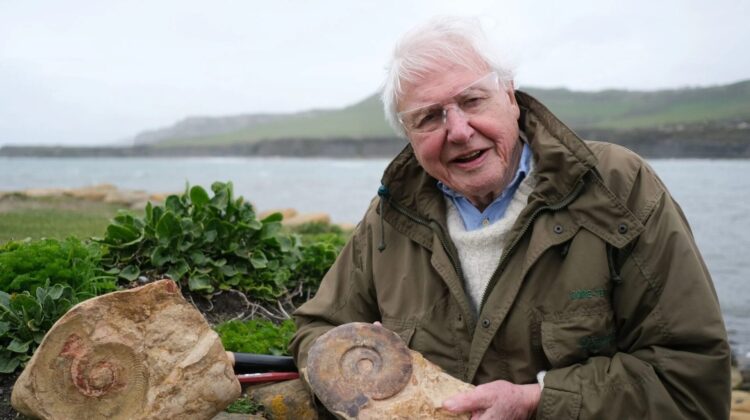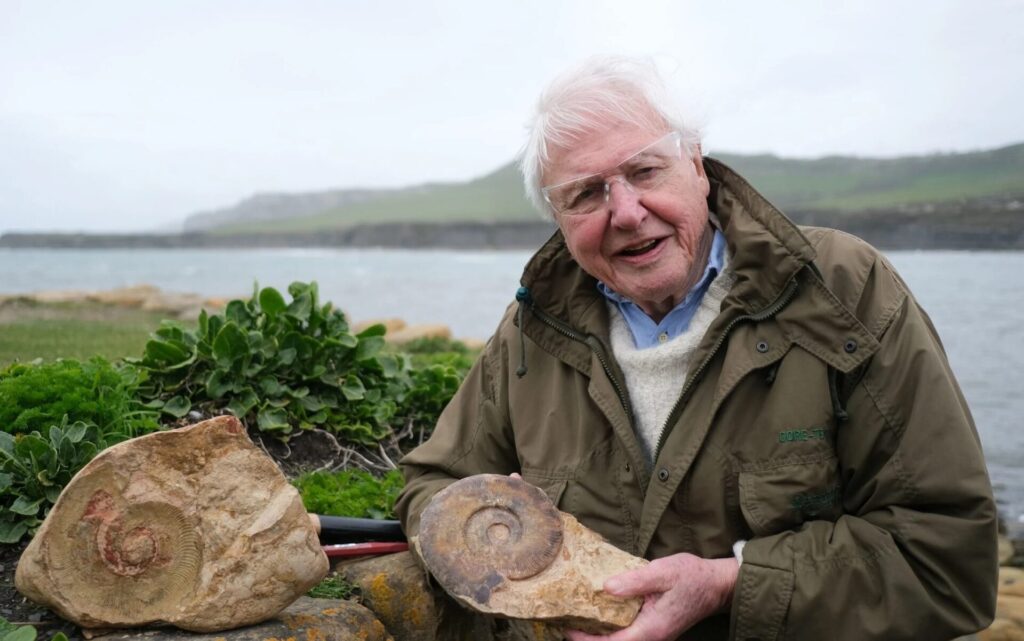
In a recent extraordinary turn of events, a fossil enthusiast named Phil stumbled upon a remarkable find on a Dorset beach when a sizable chunk of fossil detached from a cliff. What caught Phil’s attention was the imposing array of teeth incised into the fossil’s flank. Partnering with Steve Etches, curator of a nearby museum housing Jurassic Coast treasures, the duo embarked on a mission to unearth the remaining two meters of the colossal skull.
The entire endeavor is meticulously chronicled in the captivating documentary, “Attenborough and the Giant Sea Monster,” which aired on BBC One. Witnessing the process of drilling a substantial hole halfway down a cliff, extracting a massive rock, and hoisting it to the summit is a spectacle in itself. However, the true marvel unfolds as researchers delve into deciphering the significance of this colossal discovery.

The unearthed creature is identified as a pliosaur, a maritime predator dating back 150 million years. With a bite force twice that of the present record-holder, the saltwater crocodile, this ancient predator boasted 130 teeth, with the sharpest featuring vertical grooves for heightened bite efficiency. Its snout was equipped with sensors for prey detection, and its four propelling flippers operated in unison, akin to a synchronized rowing team.
Drawing parallels with contemporary species like crocodiles, penguins, orcas, and great whites, the pliosaur stood out as a formidable entity. Dr. Andre Rowe, an enthusiastic American researcher based in Bristol, expressed awe at the creature’s robustness, suggesting that not even the famed tyrannosaurus rex could have posed a threat. “As much as it pains me,” sighed Rowe, “the T. rex is going to lose this fight.”

The field of paleontology has evolved significantly since Sir David Attenborough’s initial fascination with dinosaurs. “I used to think it was just a question of finding a fossil, digging it out and saying how nice it was,” confessed Attenborough. The documentary sheds light on the intricate ecosystem of paleontologists scattered across various universities, including one at Imperial College London, where a researcher with a distinctive mohawk tests his motorized model pliosaur in a large water tank.
Despite approaching the age of a hundred, Attenborough’s enduring enthusiasm for the subject remains evident. The documentary concludes with a CGI reconstruction of a pliosaur attack, marking a rare instance where Attenborough reverts to his role as a narrator after all the scientific exploration has been accomplished. “Attenborough and the Giant Sea Monster” stands as a testament to the marvels of paleontology and the enduring allure of ancient creatures that once ruled the depths of our planet’s oceans.

Leave a Reply